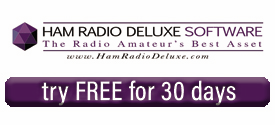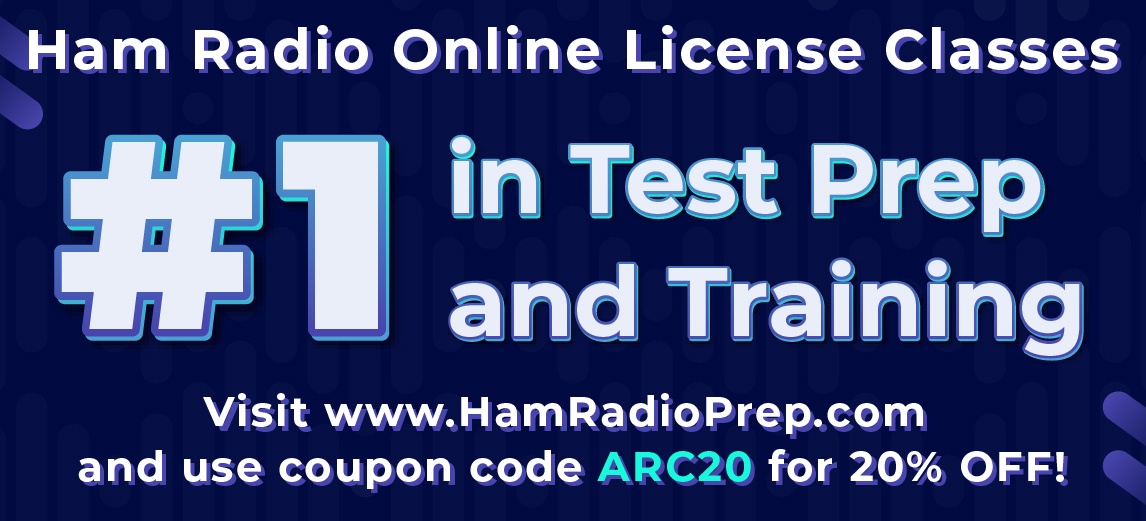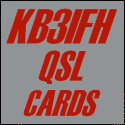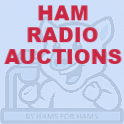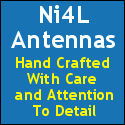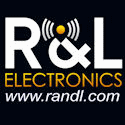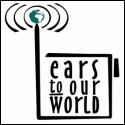Posts Tagged ‘amateurradio.com’
 Initial Get S.M.A.R.T. @ the Library a Success
Initial Get S.M.A.R.T. @ the Library a Success
Our first Get S.M.A.R.T. @ the Library event last Saturday (March 2, 2024) was a success. The Jackson ARC is holding quarterly Get S.M.A.R.T. events at the Madison (MS) Branch over 2024. Held at the Madison (MS) Branch of the Madison County Library System, we had 13 participants. Four declared that they were committed to getting their Technician license. After Library staff welcomed the group and introduced me as ARRL Assistant Director for the Delta Division and JARC President, Jim AK5J, Board Member Clay AC5Z served as the EmCee for the session. As the picture below illustrates, some were on the edge of their seats learning about today’s amateur radio story!
We used the ARRL slide deck for the basic overview during the first hour. This material is very good for introducing amateur radio to the public from my reading. We did not use the video but will use that to review in our third event, as explained in more detail below. Clay AC5Z was the lead speaker for the first hour’s information. He began with a personal “war story” but his details made the point of our theme: this is NOT your father’s radio! Here’s a snippet of that segment.
This broad overview from the ARRL material was followed up in the second hour by localizing amateur radio to the Madison area. Using the map of hams created by Ross KT1F, we first showed the famous Herman Munster segment operating in his basement as a ham. All in attendance had some recollection of this cartoon-ish description of hams. Afterwards, the point was made that licensed operators aren’t likely to be very scary. Many live nearby, often in an audience member’s own neighborhood! While all knew that Herman was a fictional character, this attacked head-on the notion that hams are “different” in negative ways. But no, they are a lot like you and may well live next door. This map localized the some 250 licensed hams in Madison County in a way that is not possible with mere words alone. It clearly and emphatically made the point that we needed to make with a high degree of audience enthusiasm. Here’s a screenshot of that map, centered on the Madison Branch Library.
This second hour was largely spent on several hams giving brief explanations on one of their respective specialties. Mike K5XU, a blind since birth ham of over 50 years who has a career in broadcasting, explained his use of Morse Code in his CW operations. He related his early experiences in the Mississippi School for the Blind where a librarian helped him get amateur radio materials to learn CW. Rick N5ZNL extolled his love of working satellites as the audience piled on the questions about this segment of the hobby that is growing in popularity. Rick’s enthusiasm was contagious in the group in attendance. I (Frank K4FMH) discussed my activity in building things, emphasizing transceivers packaged for portable operations. These include various transceivers, ranging from QRP-ish rigs to a 500w station in a Gator Case, and battery boxes to power them. Clay AC5Z discussed his using Arduino-based tools to construct an automatic satellite tracker device for a light-load satellite antenna. This set of brief (and I emphasize brief) comments about various specialties that local hams participate in were very effective tools to give public attendees a clear sense of what we do. Many had questions, asked with enthusiasm. I believe that they will tell others before the next meeting.
Librarians as Hams, Libraries having amateur radio “shacks”
In addition to hosting these Get S.M.A.R.T. events, the MCLS has announced a goal of having at least one library staffer at each county library branch licensed in the near future. Coinciding with this licensure plan, they will be obtaining a ham station at each branch with a licensed amateur radio operator on staff. We hope to assist MCLS in obtaining equipment for operating on both VHF/UHF as well as HF as this effort matures over the year. This addition to their “maker space” facility development is huge.
This commitment by the Library System was unexpected on my end. But it underscores the interest by libraries to catalyze their STEM programming efforts. With homeschooling being a significant and growing trend, local public libraries are also school libraries for some. STEM programming is a “thing” these days for public libraries as they try to better serve their market. In Madison County (MS), they see a local amateur radio club like JARC being a highly valued partner in this effort. So much so that they are willing to get staff licensed, equipment acquired and installed, and give demonstrations for library patrons. Add bringing in JARC members for enhanced instruction and there’s a winning combination.
In our next Saturday Morning Amateur Radio Time (S.M.A.R.T.) event at the Madison Branch Library, we will conduct an activation behind the library using their Garden area. It has a permanent Gazebo and fixed picnic tables with seating. There are tall trees. This is planned for early May when the weather is more predictable here in Central Mississippi. We may promote this as a field test for “Libraries on the Air (LiOTA)” but I haven’t firmly decided on that. This activity will give attendees a chance to see amateur radio in action and participate themselves under a control operator. We will have HF stations operating CW, SSB and FT8 along with a VHF/UHF rig talking to local repeaters and Rick N5ZNL waving his Arrow antenna toward the sky for satellite contacts. Rumor has it that hot dogs, potato chips, and a cold drink may be available. Hmm. Should the event be titled, “All that Ham Radio—and a Bag of Chips“?
The final two Get SMART events will be back in the Library meeting room during late summer and fall. I’ll have a better sense of the topics that will be most effective then, after the activation event. We hope to have a summer Technician training and testing class in the Library, as four declared their commitment as well as library staff who are interested.
This year-long cycle, managed by the Jackson ARC in concert with my efforts as ARRL Delta Division Assistant Director, will tell us a great deal about how to partner with public libraries as a “served educational agency” to reach the public. Thus far, I could not have asked for a better partnership than with the MCLS and the JARC.
 CHOTA 2024 is Announced…
CHOTA 2024 is Announced…
Churches and Chapels on the Air (CHOTA) 2024 will be held on Saturday, 14th September, 2024. John G3XYF, organizer of CHOTA in the UK, has announced the date for this year. For a roster in an Excel spreadsheet of the churches in the UK and US that were registered in 2023, go to this link.
Churches and Chapels on the Air (CHOTA) 2024
https://wacral.org/chota-2024/
will be held on Saturday, 14th September, 2024
In 2023, I took a leadership role in promoting participation in this low-key event here in the U.S. John G3XYF welcomed this idea. We had about a dozen on this side of the Pond to join in the fun. For 2024, I’ve floated this idea to John for his review and consideration.
What if, at a specified time each hour, every church team QSYed to a specified 20 meter frequency and tried to work each other across the Pond? Of course, propagation and equipment will rule the day. But by incorporating this 10 minute or so period into the framework, it will continue to build a bridge between the two sets of ham operators, no? I’ll post later if this idea has merit with the organizer.
Consider fielding a team at an area church this year! I’ve had several inquiries that I’ve sent along to John G3XYF as the organizer of the event. This has been underway in some fashion since 1957 so isn’t it high time we got in gear on this? Pass this webpage along to other hams whom you might think would be interested.
My church Senior Pastor and Church Administrator quickly button-holed me after the event to please organize it again in 2024. It was a great activity with the stress-to-fun ratio definitely being in the operator’s favor! Food availability tends to draw a crowd…
I’ve included a previous story I published on the Vicksburg (MS) ARC website below so readers can see how it went at my church in Ridgeland, MS for the 2023 event.
Some of our members participated in the first annual special event of CHOTA in the United States. This was at the Highlands Presbyterian Church in Ridgeland, MS on Saturday, September 9, 2023. CHOTA is Churches and Chapels On The Air, an event of the World Association of Christian Radio Amateurs and Listeners. That organization began in 1957 in England by the Huddersfield South Methodist Radio Club. It’s been ecumenical since 1978. (See https://k4fmh.com/2023/07/12/chota-2023/ for details on CHOTA and planning for this event.)
The Jackson ARC managed the Welcome Tent uponr the invitation of event organizer Frank K4FMH and his church administrator, Larnie Shinnick. JARC invited members of VARC to attend, operate and exhibit satellite communications. Eddie Pettis N5JGK was joined by an area ham, Rick Largent N5ZNL to showcase this activity. All area hams were invited to attend the event through the dissemination of an announcement flyer and ARRL MS Section emails.
Four stations were set up to work Phone, CW, FT8, and satellites. The HF stations used wire antennas hung from trees on one corner of the church’s sixteen-acre campus. Stations were limited to these to avoid RF interference. The SSB and FT8 stations each had bandpass filters to help in this regard. VARC member Eddie Pettis N5JGK used his HT and Arrow antenna, as did Rick Largent N5ZNL, to work satellites. Mike N5DU used his Xiegu G90 station at 10 watts to work FT8 on 10 and 15 meters, reaching Europe, South America for several contacts that really excited TV reporter Walt Grayson in his story. Frank K4FMH brought his HF station built into a large Gator Case featuring an Icom 7300, Ameritron amplifier, MFJ ATU, Array Solutions Bandpass System, and BHI DSP speaker. Tom Brown AE5I brought his Yaesu FT-897 transceiver and CW bug where he and Mike Duke K5XU worked the meager options available on a very ragged 40M band. A total of over 100 contacts were made throughout the US as well as around the world. Two SSB contacts were with other activated churches in the US although those in England were not heard here.
The church provided a food truck on site and added ice cream. Both were free to those in attendance. We greatly appreciate Highlands Pres for being such a gracious host for this event! Truly, a good time was had by all in attendance.
The news media was present and gave great coverage of the event, including a front-page story in the Jackson Clarion-Ledger on Monday (see pic). The Clarion-Ledger has a gallery of pictures taken by reporter Ed Inman with a front-page story in the paper’s Monday, September 11th edition. Legendary TV news reporter Walt Grayson of WJTV Channel 12 in Jackson published a video feature story for the Monday evening newscast. Jim Armstrong AK5J said that for as long as he has been a licensed ham operator, he has not seen as much publicity for amateur radio as this event has received.

Here is the coverage by Walt Grayson of WJTV Channel 12 in Jackson:
Below are some additional pictures of the event for you to enjoy.







 Operating Patterns Among Canadian Amateurs Report is Completed
Operating Patterns Among Canadian Amateurs Report is Completed
It’s taken me months longer than I anticipated but my full analysis of the national survey that the Radio Amateurs of Canada fielded in 2021 is now in completed form. RAC President Phil McBride VA3QR and Regulatory Affairs Officer Dave Goodwin VE3KG are reading it now.
Dave Goodwin had asked me to drop everything and do an extensive analysis of the 2023 RAC survey on amateur call signs for the regulator in Canada. They have published that report and the raw data themselves on the RAC.ca website. I hope they do the same with this one. It reflects RAC’s commitment to transparency in their work as the national organization for amateur radio.
I have placed a March 2024 date on the “final” version after any corrections in the final draft are completed. RAC will publish the report on their main website afterwards. I’ll put a copy at my complementary website, FoxMikeHotel.com, under this link.
There are some very significant findings in this report for amateur radio in Canada. These data are, from my experience, the most detailed measurements of operating activity for a national survey that is publicly known. Alan Griffin, Editor of RAC journal The Canadian Amateur, is interested in my submissions of papers for their consideration. Stay tuned…
 A Living Language? Or Eu tu, Brute?
A Living Language? Or Eu tu, Brute?
One of the most popular phrases from the dead language of Latin is Et tu, Brute? It is a Latin phrase literally meaning “and you, Brutus?” or “also you, Brutus?”, often translated as “You as well, Brutus?”, “You too, Brutus?”, or “Even you, Brutus?”. I’m sure we’ve all used the phrase at one time or another.
dead language
https://dictionary.cambridge.org/us/dictionary/english/dead-language
a language that is no longer spoken by anyone as their main language:
Latin is a dead language.
It’s largely locked in stone as to what the Latin phrase is but, as noted, there is some variation as to how it is translated into English. So even “dead” languages can have some variation in translation to other “living” languages. Ask any Biblical scholar on translations from Aramaic or Hebrew to English. It’s a critical part in setting apart various religious traditions. Part of this variation is because living languages are continually spoken, written, and otherwise propagated among people throughout a given culture. It’s how slang becomes mainstream. There is little in the way of formal grammar to stop this element of social change especially among newer generations. For the stern grammarians in the room: sorry, gag me with a spoon.
living language
https://dictionary.cambridge.org/us/dictionary/english/dead-language
a language that is still being used and spoken by people
I was thinking about dead vs living languages recently when I read my friend Thomas K4SWL’s post on his popular QRPer.com blog. His post was encouraging low power operators to sign not with the famous “73” but “72” instead. To use a current slang term, what up with that? I’ll quote K4SWL directly on this:
“72” isn’t a new ham radio abbreviation but according to my light research, it doesn’t date back to the earliest days of wireless either (please correct me if I’m wrong).
The late and great George Dobbs (G3RJV) notes in his book “QRP Basics” that 72 has been in use since the late 1980s as a way some operators identify that they’re running QRP or low power (generally 5 watts or less).
Thomas K4SWL was not creating something entirely new. The QRP icon George Dobbs G3RJV had acknowledged that the practice originally had currency in QRP circles in the 1980s. That’s over three decades ago. This was hardly a shockingly new revelation but something that Thomas was advocating in today’s rising popularity of QRP operations, especially in parks and on mountain peaks. Use 72 to promote QRP operations!
I commented on his post, perhaps channeling my “inner Onno” from Aussie-Land. I teased Thomas that he was dangerously treading on the controversial “living language” paradigm in amateur radio. The Grammar Police will surely track him down online, lol. I added a few comments about this monkey business on the cultural icon of using “73” as a QSO closing (or in any other communication in ham radio). I thought I’d amplify those comments here. Don’t read if you aren’t willing to spend the time with the argument I present. It’s lengthy. Or if, as the old Tareyton cigarette commercial slogan stated, you’d “rather fight than switch.”
One of the persistently divisive themes in the culture of amateur radio, especially in the United States, involves language. Yep, words. How we use them and what others think they mean. The most divisive one emanates from a cultural artifact created at the beginning of “the wireless.” By importing some of the shorthand codes from the wired telegraphy industry, wireless ham operators started using 73 in the version of Morse Code they adopted to end a transmission. This was clearly for the sake of making transmissions more efficient. I’ll note that, frankly, there were many sets of “codes,” each reflecting what a sound should be interpreted as in terms of letters or numbers or punctuation:
A telegraph code is one of the character encodings used to transmit information by telegraphy. Morse code is the best-known such code. Telegraphy usually refers to the electrical telegraph, but telegraph systems using the optical telegraph were in use before that. A code consists of a number of code points, each corresponding to a letter of the alphabet, a numeral, or some other character. In codes intended for machines rather than humans, code points for control characters, such as carriage return, are required to control the operation of the mechanism. [Source: https://en.wikipedia.org/wiki/Telegraph_code]
In fact, there were many different sets of codes! An extensive number of the early “code books” can be found in the website page below. I must say, wow, what a “living” language they were creating! From 1880 thru 1957 — some 77 years — there were continually new sets of codes and modifications of previous ones. Latin, it wasn’t!
As the ARRL’s website claims, “The first authentic use of 73 is in the publication The National Telegraph Review and Operators’ Guide, first published in April 1857. At that time, 73 meant “My love to you!” Succeeding issues of this publication continued to use this definition of the term. Curiously enough, some of the other numerals then used have the same definition now that they had then, but within a short time, the use of 73 began to change.” I don’t think the Beatles used this meaning of 73 to pen, “PS: I love you“!
This rendition of the history of the shorthand code, 73, clearly places it in the domain of a “living language” artifact. The Dodge Manual listed it as a code for “Best Regards” which has become the point of divisiveness among far too many amateur operators, for far too long. The ARRL site tries to resolve the matter by ending with, “Today, amateurs use it more in the manner that James Reid had intended that it be used –a “friendly word between operators.” Hmm. Could those words be whatever the operator wanted as long as it was friendly?
As CBS TV News Anchor Walter Cronkite used to say at the end of his newscast, “And that’s the way it is!” Mr. Cronkite, as the reader likely knows, was a well-known amateur radio operator, too. Many hams do take the 73 as “Best regards” in the spirit of Cronkite’s newscast signature, seemingly prefering to fight rather than switch.
When, my friend Thomas K4SWL posted his article, he was doing what many of those groups did at the outset of “CW” operations: proposing a new numerical shortcode with a specific reference meaning. With tongue-in-cheek, I pointed out that in the Comments section on his blog post that he had strayed into the “living language” territory for ham radio grammar. The 3rd rail of the “dead language” view is using 73 with a plural notation: 73s, 73’s, etc. Even though Maxim used 73’s at the time, the Dead Language enthusiasts (think Latin) tend to rage about this usage. I’ve continued to puzzle over why is this so?
I taught engineering students in statistics and related classes (GIS, remote sensing) over several decades. As they wrote research papers in my courses, I noticed a tendency for some to approach writing as an engineering problem with an equation-like process. As the TV character Barney Fife might say: Obey All Rules! Now, not all of my engineering students had this viewpoint but enough did for me to remember. (See, by contrast, Bob Witte K0NR’s wonderful writing as an engineer and ham operator. Or Rob Sherwood NC0B’s clear and well-written articles.)
Moreover, engineering students were not the only ones who had such an approach, such as the social science student who told me that there was only one way to write a specific paragraph. Goodness. That flew in the face of this former radio News Director who rewrote news stories for the top-of-the-hour newscast back in the day. My gut told me that this hardening of the categories in writing came from previously struggling in English composition classes so the “rules” were clung to like a life raft but that’s just one person’s sense. I have no way to generalize that so it’s just my impression based on my personal experience.
Here’s an example from a well-known ham operator who is an expert in propagation, certainly imbued with a clear background in things involving solar science (and one whom I read often and respect a lot). Here is Tomas NW7US’s blog post on this 73 grammar “travesty”:
My pointing out this post isn’t a personal criticism of Tomas NW7US. It’s an intellectual statement about language use in amateur radio with Tomas’s public post as merely one clear example. Merely reviewing the Forums on eHam.net or QRZ.com reveals many others who make the very same argument. It IS a strongly held belief by a significant group of hams. But why? Especially since the history of these two-digit codes were so dynamic during their development.
Here are my observations on this as a professional sociologist and statistician. Scientists and engineers may well understand the grammar training they received but they are not experts in social linguistics. Those professionals are indeed schooled in how language is organized, operates, and changes over time. Sociologists often use social linguistics when they study social change as cultural shifts are always part of that process. And how these beliefs are stratified across a social group like the ham radio community is prime intellectual real estate for us. Many sociologists who specialize in analyzing social action (using dramaturgy) carefully analyze the meanings sent and received by social actors in a setting or context.
Why the strongly held beliefs today about how the two-digit code “73” should be used in oral and written communications? These ham operators invariably impose grammatical substitution rules to take the original shorthand definition of 73 as “best regards” to infer that 73s/‘s is the same as saying “best regards’s,” a silly thing to do as Tomas NW7US says. Something that only the Cat in the Hat might do, for instance. This rigid grammar logic assumes that early telegraphy shorthand is a completely dead set of denoted abbreviations. Dead such that the only meaning imputed to them has been fixed and, therefore, cannot violate the substituted grammatical expressions held by these ham operators. Somehow, the Soup Nazi episode from the TV show Seinfield comes to mind. For is is not a dead expression of telegrapher’s codes as there were indeed many varying expressions associated with this two-digit code. Thomas K4SWL’s declaration about 72, reflecting some quarter century in use, is just one example that our hobby language follows a “living” model.
I’ve searched high and low in the academic world of linguistics about what are common understandings about the grammar of such symbolic representations. The Linguistic Society of America told me that they have NO members who claim expertise in the grammar of such symbols. Not one. Even my social media contact Grammar Girl declined to weigh-in on this matter! She said she wasn’t not aware of any grammatical rules that would apply.
What is Linguistics?
https://www.linguisticsociety.org/what-linguistics
In a nutshell: Linguistics is the scientific study of language. Linguists apply the scientific method to conduct formal studies of speech sounds and gestures, grammatical structures, and meaning across the world’s 6,000+ languages.
Thus, THERE ARE NO ACCEPTED RULES for conjugating ancient telegraphy symbol representations by anyone who has actual expertise in the matter of linguistics or grammar. These “substitution rules” used by some ham operators are created out of thin air. And they ain’t in Strunk & White either! To repeat, these hams are treating two-letter codes as if they are part of a “dead” language whereas they may have never been, given the dynamic history of telegraphy ciphers.
So, are these codes actually part of a living language set of cultural artefacts in today’s amateur radio?
I’ve done keyword searches periodically in eHam and QRZ for “73” versus “73s” or “73’s”. I was careful to isolate 73 without the s or ‘s. The results always show between 40-55% of the post authors using a plural form of 73. There is clear evidence of a living language cultural usage pattern by contemporary amateurs in those Forums. While not necessarily representative of all discourse by ham operators, it is enough evidence to demonstrate the differing patterns of usage existing in modern times for the two-digit symbol of 73. Even the icon Hiram Percy Maxim used 73’s in his QSL cards back in the period where this symbol was getting used frequently:
From the outset, it seems that even prominent hams had grammatical issues with how to express the underlying meaning in written language with the two-digit code, 73. Once more, how come? There appears to be a straightforward answer that has not been presented heretofore from my extensive reading in the amateur radio literature.
One academic social linguist who didn’t want to go on record with an official quote because of the lack of published evidence in the matter offered me an interpretation that as a professional sociologist I agree has merit. It ties together the existing cultural conflict and the dead vs living language distinction into an explanation.
The original use of 73 was not intended for spoken or written language but solely for the mode of Morse Code communication efficiency. It has various meanings associated with it in various “code books” early on. But it was never meant to always be a literal translation, only a shorthand for a common closing, much like the gentle wave of the hand to generally acknowledge another person. To illustrate a distinction by converse, try using SSB in a QSO but only say letters instead of enunciating full words. Clearly, this would be a different language format, one that would likely end the QSO with the other ham quickly! Why? It’s not meant to be communicated that way in voice modes.
But once in common (and understood) usage, the SYMBOL of 73 began to stand on its own, only mildly tethered to the original cheat sheet reference for these early shorthand representations. Recall the ARRL’s version of the history of 73, regaling us with the meandering underlying interpretations of the cipher. Remember, they were created solely to save the poor telegrapher’s ligaments and time hogging the party-line telegraph circuit. Thus, the substitution method invoked by some hams has NO grounding or support that I can find from professionals in linguistics or the most famous grammarian of the day, Mignon Fogarty (aka Grammar Girl). It truly is an argument made up in whole cloth by would-be grammar police. (Hmm. I wonder if they’d try to correct the rock band, Police, in their 1980 hit song, “De Do Do Do, De Da Da Da”?)
The fact that many proficient CW ops don’t “hear” letters but words or abbreviations in the dits-and-dahs underscores the living vs dead language distinction. The dits and dahs are mostly heard as clusters of sounds representing a letter, number or punctuation mark. Moreover, there are “pro signs” that supercede the use of formal words in order to be more efficiently transmitted and received, the original intent of all of the telegrapher’s ciphers. So when the symbol, 73, is used, other hams understand the “positive feeling” being expressed, not strictly one example used in the past, such as best regards.
A contemporary analogy is the emoji. It’s a symbolic, cartoon-like figure that represents a expression, sentiment or other cultural objects. How “should” we conjugate an emoji symbol? There is no grammar syntax for doing so now or perhaps in the future because these symbols are very much only VAGUE representations of “emotions.” Any claims right now by supposed emoji grammar police would quickly get rebuffed as illegitimate. This is an analogy for the two-digit cipher of 73 meaning a “positive feeling” being expressed.
Emoji are a slightly more recent invention…If it’s a little cartoon figure that is free from the binds of punctuation, numbers, and letters, it’s an emoji.
https://www.britannica.com/story/whats-the-difference-between-emoji-and-emoticons
I’ve facetiously written from time to time, just to aggravate the Grammar PoPo: 73’s, one to each of you! This ties in knots the logic of the substitution method since each and every single person technically gets one “73” (by substitution, best regards) while acknowledging that there are many recipients being spoken to. (This method in the sociology specialization of ethnomethodology is a well-known procedure of intentional rule-breaking to identify the taken-for-granted structure of meaning in communication.) Clearly, this is nonsense that only Dr. Seuss would embrace.
But Hiram Percy Maxim embraced the distinction between CW symbols and using them in written form as stand-alone terms in his widely reproduced QSL cards. From the keyword searching results I cited above, about half of the hams today understand that it’s a stand-alone symbol, detached from the specifics of “Best regards,” much as it was in the original period where these codes were formulated. It’s a grammar that largely never really was.
To conclude this set of analytical thoughts, behavior over time will eventually override previous rules. Ain’t isn’t a proper contraction according to grammar books. But it is in frequent use. The use of 73 to end a communication has not had in practice an explicit and sole connection to the telegrapher’s code list for a century now. As James Reid had intended that it be used, “friendly word between operators,” it has become just that. No more and no less.
So in my post comment, I give congratulations to Thomas K4SWL on promoting the use of 72 to represent QRP transmissions. Symbols like this are living language artifacts based on cultural change. Thanks K4SWL for helping to move this along! Viva le 72! (Hmm. Is this really gendered?)
To the Grammar Police: be like Elsa and let it go!
Best Regards’s,
Frank K4FMH
 Get S.M.A.R.T. @ the Library
Get S.M.A.R.T. @ the Library
Agent 86 in the 1965 NBC Television comedy, Get Smart, was a raging success during the years it was on network television. The phrase, Get Smart, became a water cooler slogan in the United States. While it was a comedy of errors on the part of the “smart” agents, the phrase has continued on for a half century.
We are reviving that phrase but it’s no comedy! As part of the Plant the Seed, Sow the Future initiative with the ARRL, I have resurrected an acronym that I created some years ago. S.M.A.R.T. stands for Saturday Morning Amateur Radio Time. Saturday morning is a time when many amateur operators and the public are away from their weekly schedules and attend to other matters. Like hobbies.
David KC5AAW used that phrase to organize a couple of outings in local parks in Madison MS before the ARRL’s National Parks on the Air program was created and, of course, prior to POTA(tm) becoming popular. It fizzled out after a few highly enjoyable outings due to KC56AAW entering graduate school while maintain his professional career but I had not forgotten the acronym.
My resurrection of S.M.A.R.T. is this. The Gallup organization has found that women and youth frequent public libraries twice as often as they do movie theaters. It’s the most common cultural crossroads for these two demographic groups in the United States. Supporting the newly-approved program by the ARRL to assist affiliated clubs to partner with local public libraries, the concept is for a local club to organize periodic ham radio activities at area public libraries on Saturday mornings. These programs are not directed at fellow amateur radio operators but to the general public. Patrons can thus Get S.M.A.R.T. at the library!
To kick this off locally, I’ve been working with the Jackson Amateur Radio Club to implement a formal partnership with the Madison County (MS) Public Library System. The JARC is securing funds to donate material and equipment to help build-out the MCLS “maker spaces” for STEM programming. JARC recently donated $2,000 of books and posters to the MCLS as described on the ARRL News feed. They are attempting to secure funds to donate the first of several 3D printers to the system, among other “maker” equipment.
A Get S.M.A.R.T. at the Library series will begin on March 2, 2024 with an introduction to patrons about today’s world of amateur radio. In May, when the weather is more predictable, a live activation of the Madison MS Branch Library is planned. It will be in a garden area behind the building, containing a gazebo and several permanent picnic tables. There are large, tall oak trees for antenna placement! We will setup portable stations so patrons can see and participate in today’s amateur radio action. (I’m looking for a hotdog vendor…) All of the Library System Administrators are anxious to attend and get a turn operating a radio. The flyer I’ve developed for the first event is shown at the end of this post.
Activities like these are planned to continue. The JARC will gauge the interest for a Technician Class during the year. The STEM programming from these activities will significantly enhance the Library system’s offerings to the public. We expect that new hams will become minted as a result.
Here is the standardized logo for branding the concept. It’s designed to be reusable with new dates, times and places. This will help build logo recognition for the program over time. If you’d like to use this concept at your local club, just drop me a note at my QRZ.com email address for permission to use the copyrighted logo. I’ll send you a blank one for your artwork and non-commercial use.
Amateur radio clubs should consider “getting smart” at their local libraries as an educational outreach program. The future viability of the hobby may just depend on it. Plus, it’s fun to share what you do in amateur radio with others who are already at a place because they want to learn stuff.
The Get S.M.A.R.T. at the Library concept has now gone international. The Sutton & Cheam Radio Society in South London has adopted the program (with express permission). Martin M1MRB and Chris M0TCH will lead an eight-week series at a local library, teaching the public about today’s amateur radio scene. Martin has created a website for “smart radio” in the UK to support the efforts. It’s exciting to see this idea gain traction across the pond!
This program concept can easily be replicated wherever there are ham radio groups and public libraries. It is far, far easier to get into libraries, who actively seek outside groups to provide content programing, than it is schools. Both are important for training a new generation of hams. Public libraries are the place where “home schooled” children frequent to get educational resources. So “schools” are not the only place where children are getting “schooled” as the home-schooling movement is significant in terms of size. A Washington Post article claimed it is the fastest-growing form of education outside of a conventional school setting in the U.S. Most estimates of the total numbers range from 3-4 million children nationwide.
See my previous blog articles on engaging with public libraries as another “served agency” for amateur radio. Libraries want ham radio clubs there for STEM programming. Just build a relationship with the Library System Director, much like an Emergency Operations Center relationship. Similarly, this is not a “drive by” donation to a library but a served agency relationship that is built over time.
The ball is in your court. We are already dribbling here in Central Mississippi!
 CHOTA 2023
CHOTA 2023
Recently I ran across an intriguing notice on the RSGB website. It was a notice to “prepare for CHOTA” back in 2021. CHOTA is Churches and Chapels on the Air, a product of the World Association of Christian Radio Amateurs and Listeners (wacral.org). That organization began in 1957 in England by the Huddersfield South Methodist Radio Club. It’s been ecumenical since 1978. Intriguing! Another institutional space for using amateur radio as outreach to the public. If you are a church member, it reaches out to the public who may be unaware of your existence.
I wrote to John G3XYF (jhwresdell (at) gmail.com), asking him about the prospects of my assembling a team to activate my own church in order to get the US involved in this long standing event. He quickly replied and encouraged me to do so. John only asks for activators to merely drop him a line with the call sign being used and the location of the church or chapel (or other religious institution) being activated. John will be using the call GB0LOW from his local church in the East Riding of Yorkshire. If you’re in England, contact John ahead of time for an SES callsign. And don’t forget to obtain your church leaders’ permission!
This year CHOTA is on Saturday, September 9, 2023. After contacting John G3XYF, who manages CHOTA, I learned that there has been no participation from the States in this unique event. With the dramatic rise in Parks OTA participation, getting churches on the air in a similar “non-contest” style would be enjoyable.
From the WACRAL website: There is an award available for working any CHOTA stations on the Saturday of the event – . Let’s hope the conditions are good! Those claiming the award must contact eight (8) or more CHOTA stations. Copies of the logs must include date, time, frequency, call sign of station and operators name and call sign. To claim your award, send this information to Alistair McGoff (2E0TGF) amcgoff4 @ gmail.com
This year CHOTA is on Saturday, September 9, 2023.
It’s not a contest but more of a POTA-style event.
Consider putting your church (or any church) on the air in September from here in the US. Not every one will be blessed with the space that my church has (see below) but we hams are creative in fitting our operations into the space that is available. Don’t forget to drop John G3XYF (jhwresdell (at) gmail.com) a note letting him know of your activation.
My moderate-sized church, Highlands Presbyterian Church in Ridgeland MS, sits on a 16 acre campus. In the Southwest corner, there is a small meadow with full oak and pine trees on a small ridge. It is directly across from the Township at Colony Park retail and residential complex. After doing a walk around, my church administrator and I saw it as a very useful space, both for CHOTA as well as future outdoor youth and young adult social events (think concerts, movies, and so forth). An aerial photograph illustrates the layout.
But would RF noise make it impossible on HF? I took my Icom IC-705 and a 40-10M EFHW antenna with me and threw the far end of the antenna up in a tree. There was almost no RFI detected on 20, 17 or 10 meters. That doesn’t mean that none might not suddenly appear but it’s a good omen, nonetheless. Here’s a snippet of the low noise floor I heard on 20 meters. It was very similar on 17 and 10 meters.
If we stage four tents with stations, that will give us one each for SSB, CW and Digital modes. A fourth would be a Visitor tent for those who stop by. The Jackson ARC has agreed to attend and manage the Visitor tent. The Vicksburg ARC has agreed to have Eddie N5JGK and Chris AF5OQ on hand to work satellites. Eddie is an old hand at working the Sats. He will provide us with anticipated passes in view of the ISS and other birds workable by a handheld with an Arrow dual band antenna so we can advertise the estimated times. Chris AF5OQ is President of VARC who will drive some of their members over to this event. This spot is a great spot for our planned activation with plenty of room for visitors.
My church administrator mentioned having a food truck on hand for the event. The JARC is now working with the Madison County Library System. Their adult and youth services director is dying to talk to the ISS. She can drive library patrons to the event. The options for wire and vertical antennas in the pictures below are readily available (even if we wanted to put up an antenna for 160M). See the pan-around video beneath them for a better view. Can you spot the bonus item we discovered in this video? Some of our young people are making the rounds on the recent disc golf course established on the church campus. One of them designed the course.








Did you spot the electrical meter and service panel left from a previous construction staging site? My church administrator is getting it reactivated. It will not only assist our CHOTA 2023 (and beyond) activation but be critical for other outdoor activities held in this beautiful space. While we operate battery and solar powered on our portable ops, having mains power will just make things easier for the whole event.
Food. Retail shopping across the street. Public officials. Library staff. Entire church invited, especially the young adult and youth groups. Get a successful satellite activation or two with area club members dropping by to participate and this could be an event!
 LiOTA: Libraries On The Air
LiOTA: Libraries On The Air
As readers of my blog have likely observed, I’ve been promoting a “served agency” partnership between the ARRL-affiliated clubs and local public libraries. I’m told by my Division Director, David K5UZ, that the Plant the Seed, Sow the Future Initiative was formally adopted by the ARRL Board of Directors in a recent meeting. I’ve had virtual meetings with ARRL HQ staff on advising them regarding technical details of adding maps, databases, and other material to the arrl.org website pages pertaining to clubs. The entire website was recently revised (again) so this is taking some time. Need I say, LoTW?
Locally, I’ve been working with the Jackson ARC in their recent formal partnership with the Madison County (MS) Public Library System to enhance the emergent “maker spaces” in that library system. Over this year in my role as Delta Division Assistant Director, I’ve been doing club development work with the Vicksburg ARC who is refocusing their activities and initiatives, including some discussions with the Warren County Public Library System, whose slogan is “We’re more than just books!” VARC is interested in partnering with them on creating maker space activities. These meetings and conversations have universally been met with a very strong desire by the library administrators there to welcome amateur radio into their programming. How can this be effected in ways that allow amateur radio to reach the two key demographic audiences of women and youth that visit public libraries at twice the rate that they visit movie theaters?
I’ve created a new but common proposed activity to be just one of several such ways to operationalize this “served agency” relationship: holding periodic “on the air” events at public libraries. LiOTA, short for Libraries On The Air, is outlined in a concept memo I’ve submitted to my Division Director, David K5UZ. I’ve posted it here for transparency. We will see if the ARRL Board of Directors takes advantage of the concept. If not, there may be other groups who wish to implement it.
Below is the spatial distribution of the 9,215 libraries in the current (2021) public library database. Not surprisingly, they follow population settlements which generally reflect the spatial distribution of amateur radio licensee locations. It’s also not a shock to know that they are not dissimilar to the pattern of ARRL-affiliated clubs. In other work for Plant the Seed, I’ve created spreadsheets by club for each Division showing for which public libraries the club is the nearest one to that library. These market areas can be used to easily identify potential nearby LiOTA sites. And, yes, POTA participants, I’ve already created an exhaustive list of public library entity numbers in spreadsheet and map format, ready for the League to use on their website for LiOTA, should they adopt the program.
Because of the targeted-marketing concept driving this prospective program, the logo I created includes a female radio operator at a library. Using control operators, getting women and young people on the air at libraries is the key metric of outreach in this program. Passive options, such as planned programs, displays or kiosks, books donated on amateur radio, club meetings, at public libraries are further means to reach this audience. But getting non-hams on the air will likely be a key. (If not, why do we use GOTA stations at Field Day?)
Targeted marketing starts with defining “who” specifically is a good fit for a product or service and delivering personalized messages directly to that targeted audience.
Dun & Bradstreet
Here is the logo that I’ve created for the LiOTA Program. Hmm. It might look good on a spiffy tee shirt.
Here’s the brief memo that I submitted to David K5UZ. Time will tell as to it’s fate. Contact your ARRL Division Director if you support the program!















